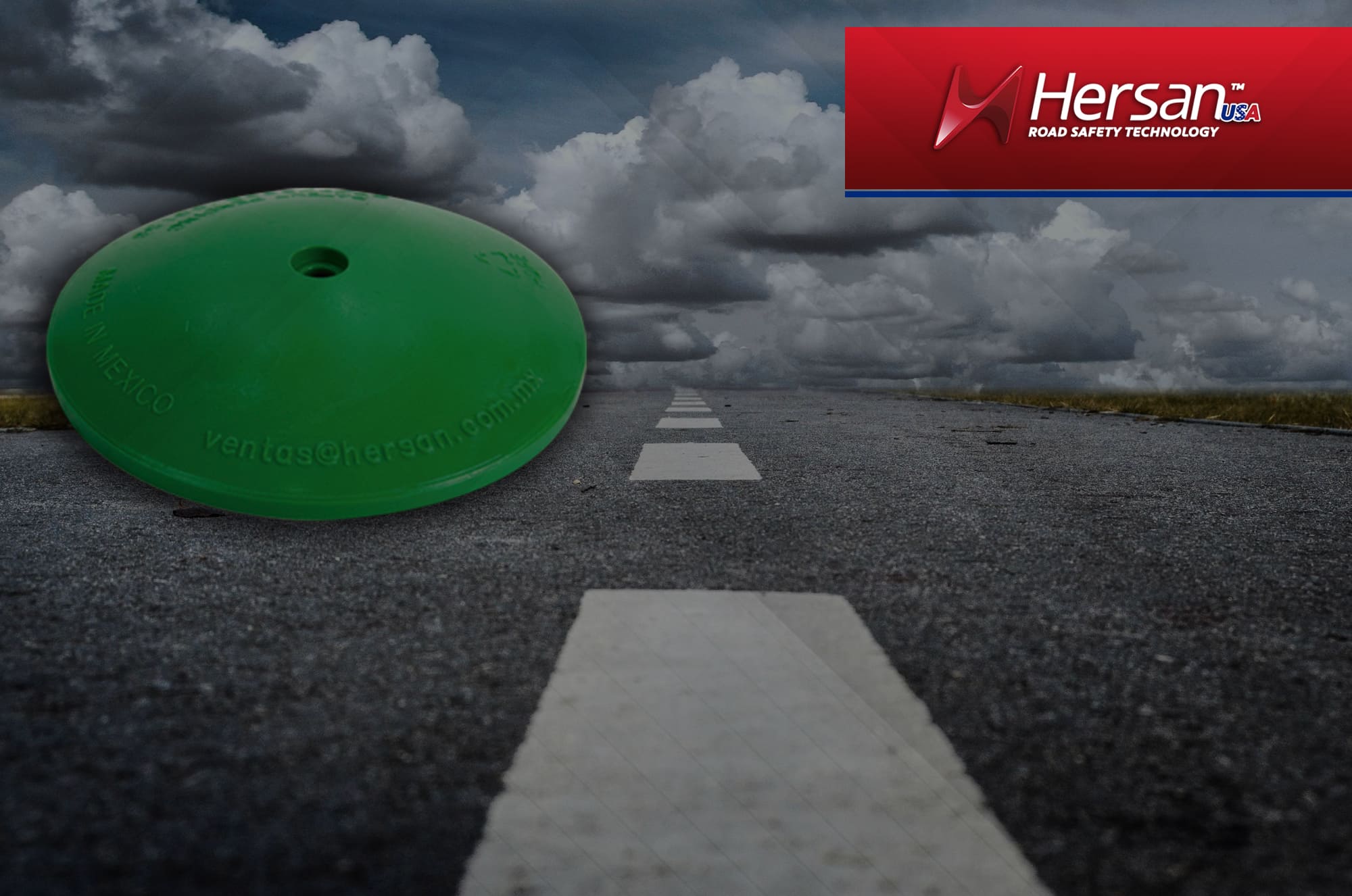Road studs are devices that are placed on the surface or on the body of structures adjacent to the roadway. Hersan's road studs come equipped with reflectors that are used to complement and enhance the visibility of road geometry. They are of great significance in adverse weather conditions and provide valuable assistance for nighttime driving.
These devices serve as reflective elements due to the presence of one or both sides of Hersan's device, arranged in such a way that when light from vehicle headlights strikes them, it reflects towards the driver's eyes in the form of a faint yet luminous beam. The reflective surfaces on the sides of these studs have ideal dimensions to meet the initial luminous intensity coefficients as shown in the following table.
Regarding their use, Hersan's road studs' reflectors can be white, yellow, or red, all of which fall within the corresponding chromatic coordinates defined in Table A3-1 of Appendix 3. When prevailing weather conditions on a road section or urban roadway necessitate it, for improved visibility of the reflective and boundary studs, at the discretion of the designer, their luminosity may be enhanced. This can be achieved through reflective elements or by elements emitting their own light, as long as the luminous beams fall within the mentioned chromatic areas and the use of a specific type of stud with self-illuminating elements has been approved by the authority responsible for the road or urban roadway, in consultation with the Directorate General of Technical Services of the Ministry of Communications and Transportation.
The studs should be affixed to the pavement through adhesion, without the use of bolts, using an adhesive that ensures their permanence for at least six months, as indicated in the following tables. They should always be present on roads with two or more lanes per direction of travel, as well as on lane-dividing lines in both directions of travel and to delineate lanes for contraflow or exclusive use on primary roads and roads with a single lane per direction of travel, with or without an additional passing lane. In all other cases, the use of reflective studs is limited to level intersections and junctions, from 100 meters before to 100 meters after: areas with heavy rainfall, fog, or dust storms; sections with potential risks for users; sections where the roadway width narrows; or any other location justified by a traffic engineering study.
Buttons are only allowed to be used with red reflectors in areas where a high incidence of accidents may occur, such as sharp curves, approaches to dangerous intersections, or urban areas, provided that a traffic engineering study justifies their use and is approved by the authority responsible for the road or urban roadway.
Furthermore, Hersan's reflective road studs that are placed on the pavement, as classified in the previous table, must have a trapezoidal cross-section in both directions, with a square or rectangular base, except in cases where their use is specified in a designated location within the project. Additionally, the angle between their base and the reflective surfaces placed on the pavement must be the same as that of the reflector installed in the direction of traffic approach.
Regarding the type of line that complements the installation of Hersan's road studs, the color of the reflective surfaces must be as indicated in the same previous table, which specifies the location of the reflective studs as well as the orientation of the reflector.
In summary, these buttons are devices used as supplements to road lines with logarithmic spacing, logarithmic spacing lines (M-9), and as rumble strips to announce the approach to a toll booth, before a level crossing with a railway, on secondary roads, before a junction with a more important one, or in any other location where it is deemed appropriate.
Visit "our page" for more information.
Follow us on social networks


